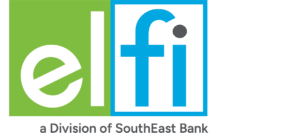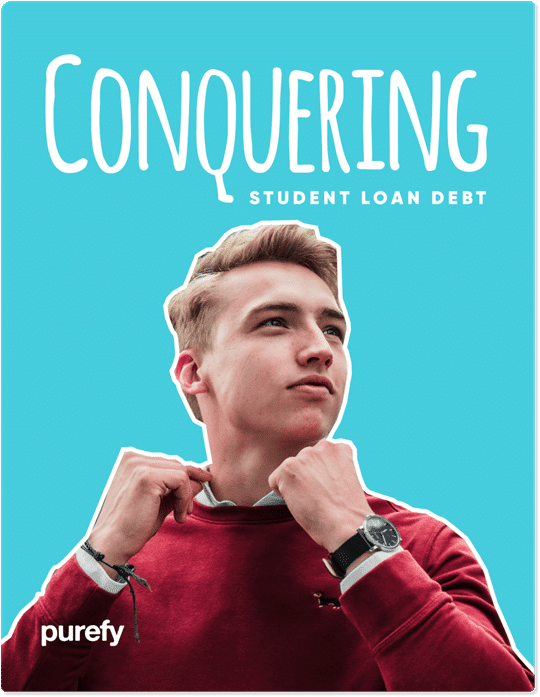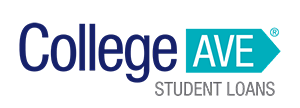If you are one of the 43.4 million people with federal student loan debt, the last two years have been strange. On March 13, 2020, the government paused federal student loan payments and set interest rates to 0%. Thanks to numerous extensions, you haven’t had to make up payments since then, so you’ve enjoyed more money in your budget for other expenses or wants.
Continue reading to learn how to pay off federal student loans more easily in 2023.
6 Federal Student Loan Repayment Options
If you don’t think you can afford your federal student loan payments, you’re not alone. In a 2021 Student Debt Crisis Center survey, 89% of fully-employed student loan borrowers said they weren’t financially ready for student loan payments to resume. They said that their loan payments would prevent them from affording other essential expenses like rent and medications.
If you can’t afford your payments, don’t panic — there are federal repayment options that could make your loans more affordable.
1. Income-Driven Repayment (IDR)
IDR plans are often the best way to reduce your payments and manage your debt. If you have eligible federal loans and apply for an IDR plan, your loan servicer will calculate a new monthly payment based on a longer loan term — 20 or 25 years — and a percentage of your discretionary income. Your discretionary income is calculated using the federal poverty level for your location and family size.
There are four IDR plans:
- Income-Based Repayment
- Income-Contingent Repayment
- Pay As You Earn
- Revised Pay As You Earn
Although there are differences between the four plans, the good thing is you don’t have to know the ins and outs of how they work. On the IDR plan application form under question two, you can check the box for “Recommended: I want the income-driven repayment plan with the lowest monthly payment.” By checking this box, you’ll be automatically enrolled in the plan that gives you the smallest payment.
You can apply for an IDR plan online or by contacting your loan servicer.
[Tip: IDR plans are qualifying payment plans for Public Service Loan Forgiveness.]
2. Extended Repayment
If you owe $30,000 or more in federal Direct loans, you may qualify for an extended repayment plan. With this option, your repayment term is changed to 25 years.
Your payments can be fixed or graduated. If they’re fixed, you’ll pay the same amount every month for the duration of the loan. If they’re graduated, they’ll start off low, but automatically increase every two years — regardless of your income.
3. Graduated Repayment
With a graduated repayment plan, your payments are initially reduced. Every two years, they increase, and your loans are paid off within 10 years (if you consolidate your debt with a Direct Consolidation loan, you can make payments for up to 30 years).
4. Income-Sensitive Repayment
Income-sensitive repayment is a program only available to Federal Family Education Loan (FFEL) borrowers, and it doesn’t qualify for PSLF. Under this plan, your payments are reduced based on your income, but you’ll pay off your loans within 15 years.
5. Direct Consolidation
Direct Consolidation is a tool you can use to combine your federal student loans into one. By consolidating your debt, you can extend your repayment term to up to 30 years. And, you may be eligible for more repayment options.
For example, Parent PLUS Loan borrowers aren’t eligible for IDR plans. But if they consolidate their debt with a Direct Consolidation Loan, they can become eligible for Income-Contingent Repayment and potentially reduce their payments.
You can apply for a Direct Consolidation Loan online.
6. Forbearance
If you lose your job, have a medical emergency, or have some other financial crisis, you may be able to postpone your payments through federal general forbearance. If you qualify, the loan servicer can pause your payments for up to 12 months at a time, for a maximum of three years over the life of your loan.
View the general forbearance request form for more information.
The 2 Best Companies to Refinance Student Loans
Our Top-Rated Picks for 2024 Offer Low Rates and No Fees

Federal Student Loan Forgiveness Programs
One of the main perks of federal student loans is that some borrowers will qualify for loan forgiveness, meaning the remainder of their debt will be completely eliminated. The three available programs are:
1. Public Service Loan Forgiveness (PSLF)
PSLF is only for federal Direct loan borrowers that work for non-profit organizations or government agencies. You can qualify for forgiveness if you work for an eligible employer full-time for at least 10 years and make 120 qualifying monthly payments. Payments made under an IDR plan are counted as qualifying payments, even if your new payment is quite low.
PSLF is notoriously difficult to qualify for, so it’s important to do your homework and carefully follow the requirements. You can use the PSLF Help Tool to see if your loans and employment are eligible find out what forms you need to submit.
[Important: In October 2021, the Department of Education announced a limited-time opportunity expanding access to loan forgiveness for federal loan borrowers. Borrowers can temporarily get credit for past periods of repayment that otherwise didn’t qualify for PSLF, giving more people the ability to qualify for loan forgiveness.]
2. Teacher Loan Forgiveness
If you’re a teacher and work for five full and consecutive academic years in a low-income school or educational service agency, you may qualify for Teacher Loan Forgiveness. Eligible teachers can get up to $17,500 in loan forgiveness.
3. Income-Driven Repayment Forgiveness
Under all four IDR plans, you can qualify for loan forgiveness if you have a balance at the end of your 20- or 25-year repayment term.
Previously, borrowers eligible for IDR forgiveness had to pay income taxes on the amount forgiven. However, that changed last year. In March 2021, President Biden signed a new coronavirus stimulus package into law. One of the provisions made student loan forgiveness tax-free, eliminating a formerly serious drawback of loan forgiveness.
How to Pay off Federal Student Loans More Easily With Student Loan Refinancing
The repayment and forgiveness strategies mentioned above can be helpful if you can’t afford your payments. But what if you make a comfortable income, and just want to pay off your loans faster? For borrowers that want to accelerate their repayment, student loan refinancing may be the solution.
How Does Student Loan Refinancing Work?
Student loan refinancing is a process where you apply for a loan from a private lender for the amount of your existing student loans. You can refinance all of your debt or just a portion of it — it’s up to you — and both federal and private student loans can be refinanced together. For example, if you have a high interest rate private student loan with Sallie Mae, you could include this loan along with your federal loans and refinance to one simple payment.
Because you’re taking out a new loan, you could qualify for different terms than you have on your existing debt. Through refinancing, you could get a longer loan term or a lower interest rate (or both).
Top refinancing lenders include:
- Earnest
- ELFI
- ISL Education Lending
- SoFi
[Tip: If you decide to refinance your loans and want to save as much money as possible, opt for the shortest repayment period you can afford. Lenders usually give the lowest interest rates to borrowers that select shorter loan terms, so pick one that is five to eight years in length.]
See How Much You Can Save
View Details
Collapse
Step 3: See How Much You Can Save
$15,310
Lifetime Interest
Savings
$1,018
New Monthly
Payment
$128
Monthly
Savings
| Current Loan | New Loan | Savings | |
|---|---|---|---|
| Rate | 6.7% | 4.2% | 2.5% |
| Lifetime Interest | $37,520 | $22,210 | $15,310 |
| Monthly Payment | $1,146 | $1,018 | $128 |
Like what you see? Check your actual prequalified rates from the industry’s top lenders in just 2 minutes or less.
What Are the Advantages of Refinancing Federal Loans?
If you have federal student loans, there are several advantages to refinancing your debt:
- You could get a lower rate: Borrowers with good credit and stable incomes could potentially qualify for a lower interest rate than they have now. By refinancing to a loan with a lower rate, you could save a significant amount of money.
- You can change your loan term: Refinancing allows you to adjust your loan term. You can shorten it if you want to save money and pay off your debt more aggressively, or you can extend it to reduce your monthly payments. Refinancing lenders offer terms ranging from five to 20 years.
- You can pay off your debt faster: If you keep making the same payment you have now after refinancing and lowering your interest rate, you could carve months or even years off your repayment term.
You can use the student loan refinance calculator to see how much you can save.
[Important: Federal loans are known for their low, fixed interest rates. But depending on when you took out your loans, your rates may be much higher than they are right now. For example, in 2019, the rates for undergraduate loans were 5.05%, while PLUS Loans were at 7.6%.]
What Are the Downsides of Refinancing Federal Loans?
Although student loan refinancing can be a helpful weapon in the battle against your debt, there are some substantial disadvantages to consider.
- You no longer qualify for federal loan benefits: When you refinance your loans with a private lender, they become private student loans. They’re no longer eligible for federal loan perks like IDR plans, PSLF, or federal forbearance programs.
- Not everyone will qualify: Unlike federal loans, which usually don’t require credit checks or have minimum income requirements, student loan refinancing is fully underwritten. You have to meet the lender’s credit and income guidelines to qualify for a loan.
- You may need a co-signer: If you don’t meet the lender’s requirements by yourself — or if you have a substantial amount of debt — you may need a co-signer to qualify for a loan.
When Does Student Loan Refinancing Make Sense?
If you’re researching how to pay off federal student loans more easily, you may be wondering if student loan refinancing is right for you. Refinancing can be a smart decision, especially in the following scenarios:
1. You aren’t eligible for loan forgiveness
One of the biggest drawbacks to refinancing federal student loans is that you lose eligibility for IDR, PSLF, or Teacher Loan Forgiveness. But if you don’t qualify for those programs — for example, if you earn too much money or don’t work for a non-profit organization — you don’t have to worry about losing that perk.
2. Your student loan debt is holding you back
If you have a high loan balance and large monthly payment, it can be difficult to enjoy your life or plan for the future. Worrying about your money and making your payments on time can be immensely stressful and prevent you from achieving your goals.
By refinancing your loans, you could get a lower rate and pay off your loans much faster, eliminating that weight from your shoulders. How much of a difference could it make? Consider this example:
Ben graduated with $30,000 in student loans at 5.05% interest, and he has seven years left in his loan term. He decided to refinance his loans and, determined to get rid of them quickly, he applied for a five-year loan. The lender approved his application and gave him a 2.8% interest rate.
With a shorter loan term and a lower rate, Ben pays off his loans two years sooner, but he also saves over $3,400.
| Original Loan | Refinanced Loan | |
| Remaining Term | 7 Years | 5 Years |
| Monthly Payment | $425 | $536 |
| Total Interest | $5,677 | $2,184 |
| Total Repaid | $35,677 | $32,184 |
| Total Savings | $3,493 |
3. You feel like you aren’t making progress with your debt
If you have federal student loans with high interest rates — in the past, the interest rates for graduate and parent student loans have been as high as 7.9% — it can feel like making progress is impossible. With such a high rate, interest can accrue rapidly, so even if you pay thousands of dollars, you may not chip away very much at the principal.
By refinancing your debt, you can ensure more of your monthly payments go toward the principal rather than interest. It will help you pay off your debt faster — and save money.
Molly has $50,000 in student loan debt from graduate school. Her loans are at 7.6% interest with a monthly payment of $596, and she has 10 years left to her loan term.
Molly refinanced her loans. She qualified for a 10-year loan at 4.5% interest, so her monthly payment dropped to $518 per month.
If she stuck to that payment for the duration of her loan, she’d save over $9,000. But because she qualified for a lower rate, Molly decided to tackle her debt aggressively. She kept paying the same amount she had paid before she refinanced — $596 — so she paid an extra $78 per month.
By making extra payments every month, Molly eliminated her debt in about eight and a half years. And, she saved over $2,000 more than if she had made the minimum payments on her refinanced loan.
| Original Loan | Refinanced Loan | Refinanced Loan With Extra Payments | |
| Time to Repay | 10 Years | 10 years | 8 Years, 5 Months |
| Monthly Payment | $598 | $518 | $518 + $78 extra payment |
| Total Interest | $21,535 | $12,183 | $10,149 |
| Total Repaid | $71,535 | $62,183 | $60,149 |
| Total Savings (Compared to original loan) | $9,352 | $11,386 |

Free eBook: How to Conquer Student Loans
Free eBook: How to Conquer Student Loans

How to Refinance Your Federal Student Loans
Now that you know how to pay off federal student loans more easily through refinancing, you can start the process for yourself:
- Review your credit: In general, student loan refinancing lenders look for applicants with good to excellent credit. If you haven’t yet, review your credit to make sure all of your accounts are in good standing and to ensure there are no mistakes on it. You can view your credit reports for free at AnnualCreditReport.com.
- Look for a co-signer: If you don’t have good credit — or if you don’t have an established credit history — it can be difficult to qualify for a loan. One workaround is to ask a parent, relative, or friend that has good credit to co-sign your loan application. It’s a big favor — they’re obligated to repay the loan if you fall behind — but it can be worth it because you’ll have a better chance of qualifying for a loan and getting a competitive rate.
- Think about your goals: Before applying for a loan, think about your goals for refinancing your debt. Do you want to pay off your debt as soon as possible? Or do you want to reduce your payments? What you want to achieve will affect what lenders and terms work best for you.
- Shop around: Instead of choosing the first lender you find, it’s wise to shop around. Borrower requirements, repayment terms, perks, and interest rates can vary by lender, so check with multiple companies before choosing one.
- Fill out a prequalification form: Instead of manually requesting rate quotes from every lender, use Purefy’s Compare Rates tool. By filling out one simple form, you can get quotes from top refinancing lenders. And, it doesn’t affect your credit score.
- Choose a lender: After requesting quotes, review your loan options. Choose the loan that gives you the terms that match your needs, such as the lowest payment or lowest overall repayment cost.
- Submit your application: To apply for the loan you chose, you’ll have to submit a full application. The lender will ask for your Social Security number, birth date, employment information, and details about your existing loans. You’ll also have to consent to a credit check. The application process doesn’t take long to complete; you can usually submit it in under 30 minutes.
- Finalize the agreement: After submitting your application, the lender will review it and pull your credit report. They’ll notify you of their decision and, if you’re approved, will send you a loan agreement to review. Make sure you read the agreement and understand the terms and conditions before signing the contract. It can take several weeks for your existing loans to be paid off and closed, so continue making the minimum required payments until the refinancing lender sends you a confirmation that the loans have been paid off.
That’s it! You’re on your way to refinancing your debt and paying off your loans once and for all.
Paying Off Your Student Loans
If you’re struggling with your debt and wondering how to pay off federal student loans more easily in 2023, you have many options available to you. If you want to keep your federal loans in their current state, you may be eligible for an alternative payment plan or a forgiveness program based on your employment. Or, you may be able to postpone your payments if you’re dealing with financial issues.
As soon as you realize there’s a problem, contact your loan servicer. By being proactive, the loan servicer will be more willing to work with you to find a solution.
If you won’t need the benefits of federal student loans or simply want to pay off your loans as fast as humanly possible, student loan refinancing could be the solution you’re looking for. You could get a lower rate, allowing you to pay off your debt faster and save thousands.
To get started, check out the options offered by the top student loan refinancing lenders.



















